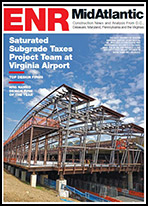Spanish Firms Will Help Build Toronto Subway Extension
A Spanish joint venture is gearing up to build Toronto’s first new subway line in almost a decade. The $2.6-billion, 8.6-kilometer route will entail excavating 4.5 km of 5.4-meter-diameter tunnels using the Earth Pressure Balance Method.
In winning the $410-million stipulated lump-sum contract for the northern section of the planned Spadina subway extension, the Madrid-based firms Obrascon Huarte Lain and FCC Construccion are making their debut as team leaders for a Canadian job. The award also includes building one of the stations—known as Highway 407—including a 600-vehicle parking lot and bus depot. The work is to be completed by 2015.
The joint venture’s management team will supervise the project, but local subcontractors and trades will be used, says Manuel Crespo, its general manager. The firms have partnered on other tunnel projects, including the Barcelona Metro, and hope to pursue further work in North America.
The overall $2.6-billion project also includes some open-cut work and the excavation of 2.6 km of twin tunnels by a second joint venture consisting of Aecon Constructors, McNally Construction and Kiewit Construction. Awarded last fall, that contract includes construction of one of the stations. A mix of contractors will be building the other four.
Some launch shafts have been built and tunnel construction should be under way by April, says Andy Bertolo, Toronto Transit Commission chief project manager. The commission is managing the project in partnership with consulting firms Stantec, MMM Group, Delcan Corp. and Hatch Mott MacDonald.
Utility relocation and preliminary construction have been under way since 2008. The city purchased four earth pressure balance Lovat tunnel boring machines—at a cost of $13 million apiece—which it will sell after the project is completed, says Bertolo. Passing underneath York University and several heavily traveled roads and streets, the machines are expected to travel about 15 m a day, depending on soil conditions, he says. The tunnelers are expected to encounter favorable geology consisting of stiff upper, and even stiffer lower, glacial till with isolated lenses of sands and silts as they dig as deep as 22 m.
The extension will link the northwest part of the city and neighboring York Region with the main transit system. Not only will the line be the first to cross into another municipality, it will also be the first subway Toronto has built since the 6.4-km five-station Sheppard subway opened in 2002, representing a partial revival of a once-massive plan. (ENR 8/2/99 p. 36) It is funded by the Canadian government, the province of Ontario, the city of Toronto and York Region.






